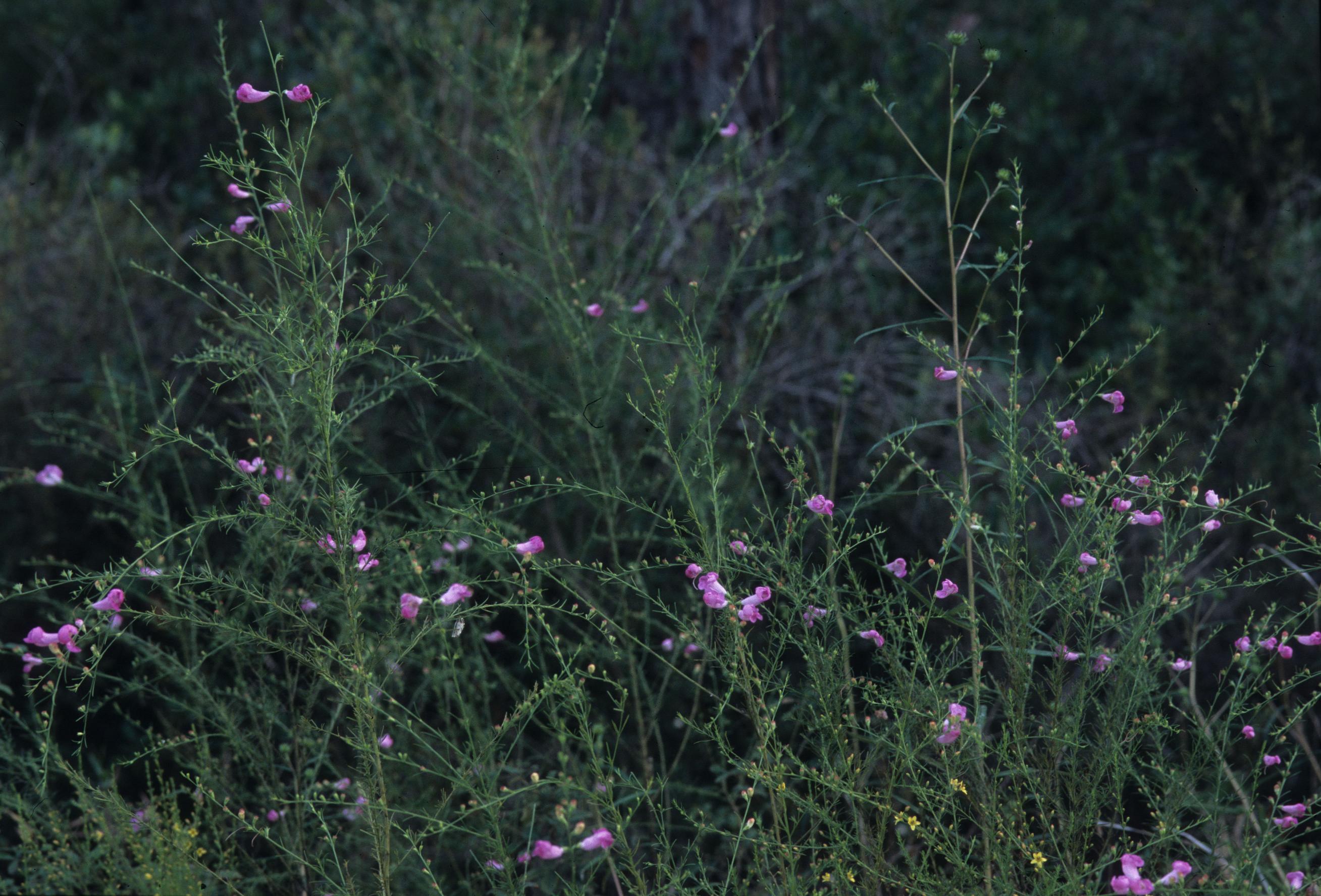Difference between revisions of "Agalinis fasciculata"
| Line 19: | Line 19: | ||
==Description== | ==Description== | ||
<!-- Basic life history facts such as annual/perrenial, monoecious/dioecious, root morphology, seed type, etc. --> | <!-- Basic life history facts such as annual/perrenial, monoecious/dioecious, root morphology, seed type, etc. --> | ||
| + | It is an annual plant and it produces large, pink flowers in late summer (Musselman et al 1979). Numerous small capsules each carrying hundreds of brown honeycombed seeds mature in late autumn (Musselman et a 1979). Agalinis fasciculata is a root hemiparasite. A great variety of herbaceous and woody plants make up its host range. (Musselman et al 1979). | ||
==Distribution== | ==Distribution== | ||
==Ecology== | ==Ecology== | ||
===Habitat=== <!--Natural communities, human disturbed habitats, topography, hydrology, soils, light, fire regime requirements for removal of competition, etc.--> | ===Habitat=== <!--Natural communities, human disturbed habitats, topography, hydrology, soils, light, fire regime requirements for removal of competition, etc.--> | ||
| + | It can be found in frequently burned pine sandhills (Entisols), flatwoods (Spodosols), upland pine communities and shortleaf pine-oak-hickory woodlands (Ultisols), as well as calcareous glades, and margins of ponds, lakes, depressions, marshes, and wet meadows, and on the borders of dunes (Musselman et al 1979; FSU Herbarium). It occurs on a wide range of soil types from deep sands to loamy clay (FSU Herbarium). It requires high light provided by frequently burned areas (Musselman et al. 1979; FSU Herbarium). It can occur on very disturbed soils, such those in railroad and power line rights-of-way, clear-cut areas, disturbed roadsides, dredged up sand, and site-prepped pine forests (Musselman et al 1979; FSU Herbarium). It appears to be somewhat salt tolerant given its proximity to salt marshes (Musselman et al. 1979) and co-existence with Spartina bakari and other brackish and salt water plants (FSU Herbarium). | ||
===Phenology=== <!--Timing off flowering, fruiting, seed dispersal, and environmental triggers. Cite PanFlora website if appropriate: http://www.gilnelson.com/PanFlora/ --> | ===Phenology=== <!--Timing off flowering, fruiting, seed dispersal, and environmental triggers. Cite PanFlora website if appropriate: http://www.gilnelson.com/PanFlora/ --> | ||
===Seed dispersal=== | ===Seed dispersal=== | ||
Revision as of 13:12, 26 June 2015
| Agalinis fasciculata | |
|---|---|

| |
| Photo was taken by Gil Nelson | |
| Scientific classification | |
| Kingdom: | Plantae |
| Division: | Magnoliophyta - Flowering plants |
| Class: | Magnoliopsida - Dicotyledons |
| Order: | Scrophulariales |
| Family: | Scrophulariaceae |
| Genus: | Agalinis |
| Species: | A. fasciculata |
| Binomial name | |
| Agalinis fasciculata (Elliott) Raf. | |

| |
| Natural range of Agalinis fasciculata from USDA NRCS Plants Database. | |
Contents
Description
It is an annual plant and it produces large, pink flowers in late summer (Musselman et al 1979). Numerous small capsules each carrying hundreds of brown honeycombed seeds mature in late autumn (Musselman et a 1979). Agalinis fasciculata is a root hemiparasite. A great variety of herbaceous and woody plants make up its host range. (Musselman et al 1979).
Distribution
Ecology
Habitat
It can be found in frequently burned pine sandhills (Entisols), flatwoods (Spodosols), upland pine communities and shortleaf pine-oak-hickory woodlands (Ultisols), as well as calcareous glades, and margins of ponds, lakes, depressions, marshes, and wet meadows, and on the borders of dunes (Musselman et al 1979; FSU Herbarium). It occurs on a wide range of soil types from deep sands to loamy clay (FSU Herbarium). It requires high light provided by frequently burned areas (Musselman et al. 1979; FSU Herbarium). It can occur on very disturbed soils, such those in railroad and power line rights-of-way, clear-cut areas, disturbed roadsides, dredged up sand, and site-prepped pine forests (Musselman et al 1979; FSU Herbarium). It appears to be somewhat salt tolerant given its proximity to salt marshes (Musselman et al. 1979) and co-existence with Spartina bakari and other brackish and salt water plants (FSU Herbarium).